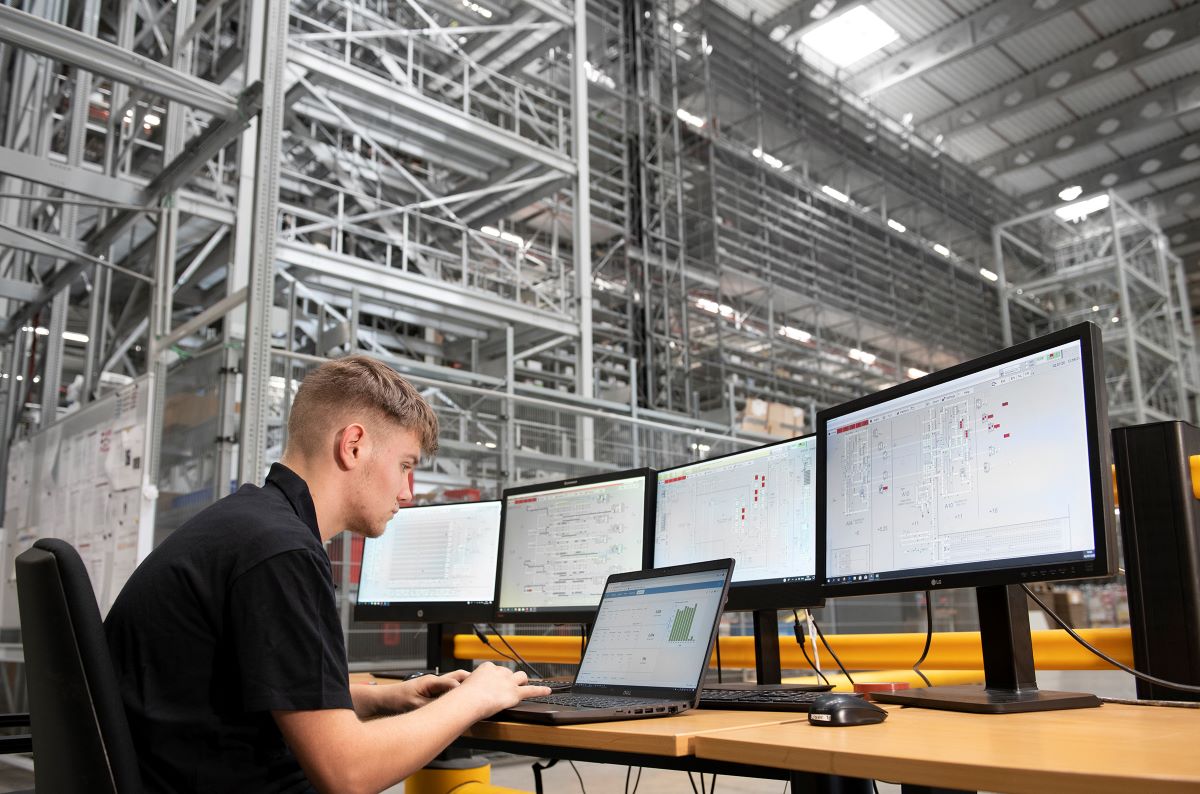This year’s LogiMAT sees Dematic, the intelligent automated solution provider for warehouses and distribution centres welcoming customers and visitors in Hall 10 (C41), alongside fellow KION brands STILL, Linde MH and Baoli.
During the three days of the Stuttgart, Germany industry trade show, Dematic plans to provide visitors a glimpse of the future with several innovative showcases offering immersive 3D experiences as well as an expert forum to discuss what the future has in store for the industry.
“Our industry has taken huge leaps the last few years to stay ahead of some of the challenges customers are facing. And yet, we understand that even more is needed to bring the industry and customers to the next level of intralogistics. What better way to do so than by demonstrating the combined strengths of Dematic and its fellow KION brands and showing how the customer can benefit!” states Bernard Biolchini, executive vice president EMEA, on the decision to join forces in the same hall at this year’s LogiMAT.
Adds Biolchini: “We firmly believe that by offering customers end-to-end solutions from a single provider – no matter whether they are a small, medium or large enterprise – a customer can only come out stronger when the solutions are from a single provider. And no one can compete with what our brands offer together when we come together!”
Immersive Showcases
Under the slogan “Engaging the Future”, Dematic has developed a host of immersive showcases showing a range of automated processes and customer services for the warehouse of tomorrow. Underlying this theme is the aspect of how the integration of systems is the only way forward and that tomorrow’s automation technologies will need to be integrated to shorten lead times and to maintain efficient processes. Integrated solutions can also increase safety and productivity – all critical aspects for a sustainable operation of a warehouse or distribution centre.
Perhaps the most dynamic showcase on display is with fellow brand STILL. It simulates the automation of a real-life process. Pallets are transferred to an AMR by an automated high-lift truck. It transports the goods to the warehouse for palletising and then to packing. The last two steps take place digitally in a virtual warehouse. The showcase will be displayed on high-resolution LED screens at eight hotspots. Visitors can freely control the AMR interactively with gamepad and obtain additional information. Only the latest real-time technology is used in the interactive 3D applications. “No doubt the showcase with STILL demonstrates very vividly the immense advantages and synergies that users can gain from combining the portfolios of Linde, STILL and Dematic. Holistic automation solutions of this kind are still unique on the market,” says Biolchini.
Tomorrow’s Warehouse at LogiMAT
At last year’s LogiMAT, the Dematic drone inspection services live demonstrations proved to be a highlight. Picking up from where they left off, the customer service innovations for 2023 will continue to inspire. Because tomorrow’s warehouses will be highly complex and integrated, the team from Dematic is focusing on lifecycle management solutions with thermographic inspections topping the list. The solution allows operators to detect the overheating of motors, cables and cabinets before production shutdowns are necessary.
Thermal bridges and leaks in a building, in special warehouses such as deep-freeze or oxygen storage facilities, can also be detected. Unplanned production stoppages can thus be avoided. “As a result, the risk of fire decreases while plant availability and productivity increase,” notes Alberto Rostagno, vice president Customer Service EMEA for Dematic.
Visitors can experience first-hand an evaluation using thermographic images and learn how the use of AI can optimise and automate these evaluations.
Dematic is also planning to demonstrate the depth of its interactive digital footprint at LogiMAT, which can be used to monitor a facility in real time and build simulations. This capability enables digital services used to identify optimisation opportunities and reveal potential areas for improvement. “With the help of our digital simulation tools, various strategies and processes can be tested and analysed to identify the causes of existing problems,” explains Rostagno.
The demands on tomorrow’s warehouse will rely on moving connectivity beyond the four walls of a facility to integrate with processes happening outside and beyond. Together with fellow brand LINDE MH, Dematic will demonstrate in another showcase how its portfolio of software solutions can manage a customer’s warehouse operations as well as look after fleet management, streamline maintenance processes and improve workflows with its asset management software as well as integrate with a customer’s existing SAP systems.
Human Touch
But with all the innovative technology Dematic plans to unveil at Europe’s largest industry trade exhibition, it has not forgotten the importance of the human exchange of ideas and concerns.
Thus, the industry leader’s newest addition to its trade show appearance this year is the “Engaging the Experts – Dematic Forum”, a discussion platform where it brings together inhouse experts, customers and other industry leaders to discuss trends and likely innovations for tomorrow. Visitors are invited to participate in six 20-minute discussions scheduled during the three days of the trade show.
“At the end of the day, we want our LogiMAT presence to live up to our claim of powering the future of commerce by providing best-in-class vertical market-based, intelligent supply chain solutions with flexible and dynamic fulfilment,” says Biolchini, adding, “and I believe visitors to our stand this year will not be let down.”






